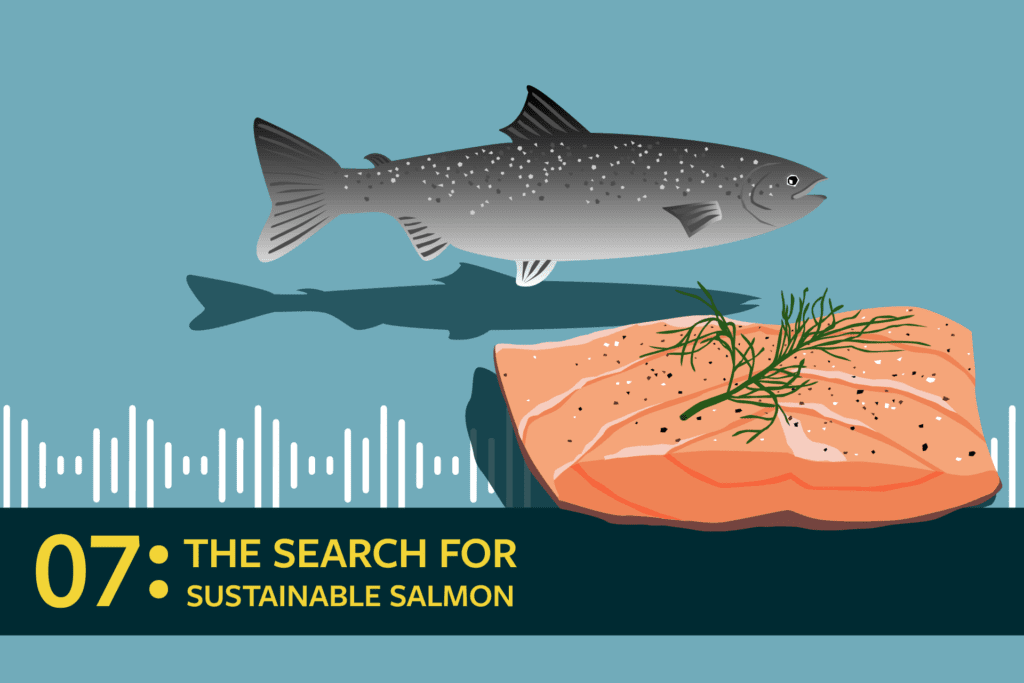Salmon hatcheries: Unsuccessful conservation, insufficient regulation, and poor animal welfare
This is an opinion piece which was written as a direct outgrowth of the Oxford Centre for Animal Ethics’ Annual Summer School, held in August of 2025.
Wild salmon populations are threatened or endangered in waters across the globe thanks to growing consumer demand, which prevents them repopulating. Meanwhile, salmon face climate change, pollution, habitat degradation, dams, predation from exotic species, and reduced availability of food. Efforts to increase salmon populations have long focused on hatcheries, with the earliest salmon hatcheries starting in Scotland in 1838, and in the USA in the 1870s, in the hope of reversing their dwindling numbers for recreational and commercial fishing, or to address endangerment and extinction.
The hatcheries take adult salmon from the wild, spawn them, then incubate and hatch their eggs. The young are raised in captivity and released into rivers and streams. While this sounds reasonable, there are significant problems. Salmon raised in hatcheries have genetic differences, and do not develop in the same way as their wild cousins. They are less able to survive in the wild: they learn to be aggressive while feeding because of the concentrated nutritional value of pellets, but fail to cultivate appropriate fear of predators, and struggle to find breeding places as adults.
Hatchery-raised salmon also pose threats to wild salmon. Introducing even small differences in gene composition or expression into wild salmon populations can disrupt the delicate relationship with particular environments. There’s mounting evidence that despite mitigation efforts, hatcheries continue to dilute the genes of wild salmon in detrimental ways. Salmon from hatcheries also compete for food and can bring disease to the habitats of wild salmon. Additionally, captive salmon are fed dry pellets which often include fish oil or fish meal, requiring wild caught fish – further depleting the food of wild salmon.
Recent statistics show that 126,906,208 fish and aquatic wildlife were released annually by U.S. national fish hatcheries, of which almost 120 million were sport fishes released to support recreational fisheries, with 20 million distributed to tribal lands. 70 million were threatened or endangered species raised in national fish hatcheries. Yet, despite this outlay of resources, not a single salmon has been freed of threat! In the Columbia River Basin alone, 106 runs of anadromous fish have become extinct: Wild fish populations have declined there by 98%. Pacific salmon have disappeared from 40% of their historical rivers and streams in California, Oregon, Washington, and Idaho.
Why do hatcheries fail?
Why this abject failure? Because a conflict exists between hatcheries’ two goals – conservation and production for commercial and recreational purposes. Hatchery operations are often not aligned with conservation goals because of genetic manipulation and the constraints of captive behavior adaption. The endangerment and extinction levels prove that, more than a century later, hatcheries have failed to meet conservation goals. Indeed, recent studies prove they can actually threaten those populations. A review of 50 years of studies, “A global synthesis of peer-reviewed research on the effects of hatchery salmonids on wild salmonids”, found 83% reporting negative effects of hatcheries on wild fish populations, versus 3% reporting positive effects. Negative effects include reduced size, reduced genetic diversity (from interbreeding with hatchery fish), and reduced success at natural reproduction.

What does the law do or say?
Sadly, the laws we assume would protect the welfare of the fish raised in captivity do not exist, or do not apply. The federal Animal Welfare Act, which applies to breeding (sales), transportation and research, does not include aquatic animals in its definition of “animal”, meaning these species have no protections. The Endangered Species Act which applies to threatened or endangered species and habitats, does not generally apply to hatchery-raised animals.
The lack of concern for the well-being of hatchery-raised salmon, along with the lack of conservation success for wild salmon (and their habitats) suggest it’s high time we reconsidered the use of hatcheries. At minimum, facilities should be legally regulated to address animal and environmental welfare. An even better response would be to turn our attention and resources to the causes of salmon endangerment – overfishing, pollution, dams, climate change, and resource reduction. A moratorium on fishing would do more in a single decade to restore healthy salmon populations than 150 years of hatchery operations have done. Time to hatch a far better plan.
Luckily, these and other issues resulting from animal captivity were recently analyzed by experts at the Oxford Centre for Animal Ethics Summer School in the hope of finding real solutions.
Get the latest food news from FoodPrint.
By subscribing to communications from FoodPrint, you are agreeing to receive emails from us. We promise not to email you too often or sell your information.
Top photo by marcelokrelling/Adobe Stock.
More Reading
Why farmed seafood deserves an ethical debate
September 8, 2025
Think you’re eating local seafood? Beware of 'local-washing'
May 21, 2025
When bycatch is on the menu
December 12, 2024
The quest for more sustainable caviar
July 3, 2024
Celebrating the Black history of oysters with chef Jasmine Norton
June 21, 2024
Oyster farming is the good kind aquaculture
April 2, 2024
A new report sheds light on the problems behind our imported shrimp
March 27, 2024
The collapse of fishing giant Blue Harvest exposes the weakness of catch share policies
November 20, 2023
Can We Really Eliminate Invasive Species by Eating Them?
July 19, 2023

